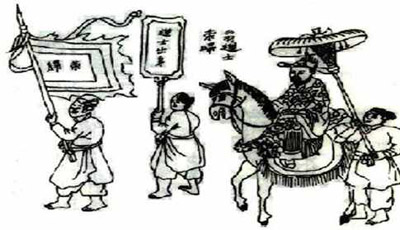By Andrew Lam, New America Media
According to The National Center for Fair and Open Testing, there’s a disturbing trend in SAT scores in America.

Since 2006, the score over all has fallen 20 points, dropping from 1518 to 1498 in 2012, six years later. White students’ average score has fallen by a relatively small 4 points, though other ethnic groups have fallen by as much as 22 points.
There’s one exception, however. Asian American students are scoring higher than ever before, and on average this population has seen their score rise by a shocking 41 points.
The news does not shock the population that scores the highest, of course. Academic achievements have long been a nourished dream for many Asian Americans, a population in which 2 out of 3 are immigrants. It harkens back to the imperial courts of China and Japan and Vietnam. And these dreams of academic success have survived long journeys and refugee camps and, for many, they became a reality in America, where two out of three in the Asian American population are immigrants.
Take my friend H. for example. In his first semester at UC Berkeley, H. painted a picture that harked back to a foreign and distant past. In it, a young mandarin in silk brocade and hat, flanked by banner-carrying soldiers, rides an ornate carriage down the road along which peasants stand and watch.
We had just met then, and when he saw me looking at his painting, H. said, “Do trang nguyen ve lang” — Vietnamese for “Mandarin returns home after passing the Imperial Exam.”
But H. didn’t need to explain. Like many Asian students from Confucian-bound countries — Vietnam, Singapore, Korea, Japan, and of course, China, what a family friend often called “chopstick nations” — I could easily decipher the image.
In some ways, for us scholarship boys, it is the equivalent of Michael Jordan flying in the air like a god doing a slam-dunk — a dream of glorious achievement.
H. was driven by an iron will to achieve academic success.
While his dorm-mates put up posters of movie stars and sports heroes, the image he drew and hung above his desk was a visual sutra that would help him focus. There was no question of failure. Back home, an army of hungry, ambitious and capable young men and women were dying to take his place, and for H., a boat person who barely survived his perilous journey across the South China Sea, “dying to” was no mere idiomatic expression.
No surprise then that almost three decades since my college days, Asian Americans dominate higher education.
Though less than five percent of the country’s population, Asian Americans typically make up 11 to 30 percent at the country’s best colleges. In California, Asians form the majority of the UC system. And at Berkeley, Asian undergraduates reached the 39 percent mark in 2012, whereas whites are at 29 percent.
The dream of upward mobility in Asia existed long before America ever existed. For over a millenia something of the American Dream had already taken place in East Asia, through the system of Mandarin examinations.
Clans and villages pooled resources and sent their brightest to compete in the imperial court in hopes of having one of their own becoming a mandarin.
Mandarins of various rankings, indeed, were selected by how well they fared through the extremely rigorous examinations. Those brilliant few who passed were given important bureaucratic duties and it was they who ran the day-to-day operations of imperial court.
A mandarin could become governor, a judge, or even marry into the royal family. They oversaw the daily organizing of the government. A peasant thus could rise high above his station, honoring his ancestors and clans in the process. And it all hinged on his ability to pass the exams.
That penchant for education hasn’t changed a whole lot since the fall of the Qing Dynasty (1644-1911). If anything it has become intensified because the modern education system in various countries — but especially in the United States — has given opportunities to far more people than ever before.
Given this shared value, it is no surprise that many Asian parents work three jobs, live in two separate continents for the sake of their children, or spend all their savings for private schools and private tutors in order that their children will have a chance at a good education. And consequently, their children, sharing a deep sense of filial piety and obligation, find that they need to honor and fulfill their debt by achieving academic success.
The danger is that many learned to measure the world, themselves and their children solely through a pedagogic lens. That is, education is so worshiped that not getting good grades often means failing to achieve one’s destiny and thereby failing one’s own and one’s family’s expectations, bringing shame and loosing face.
Indeed, what’s barely explored, sadly, is the darker narrative, that subterraneous stream that runs parallel to this shining path to academic success. And for those who fail to make the grade, for those who buckled under the academic pressure, there’s often a profound identity crisis that often leads to disappointment, depression, and, in some cases, even suicide.
Besides, the real struggle begins after graduation. For many who did well on tests as students, that same momentum and drive fades when they reached professional life. Then there’s the glass ceiling that barely cracks: for despite enormous change and progress, there’s the persistent view of Asian Americans — preserving ties to their homeland and private cultures — as permanent outsiders.
The reality is that to become real mandarins in America, it takes more than high scores on the SAT.
Andrew Lam is the author of “Perfume Dreams: Reflections on the Vietnamese Diaspora,” “East Eats West: Writing in Two Hemispheres,” and, his latest, “Birds of Paradise Lost,” a collection of story about Vietnamese refugees in the Bay Area, which is now available on Kindle

